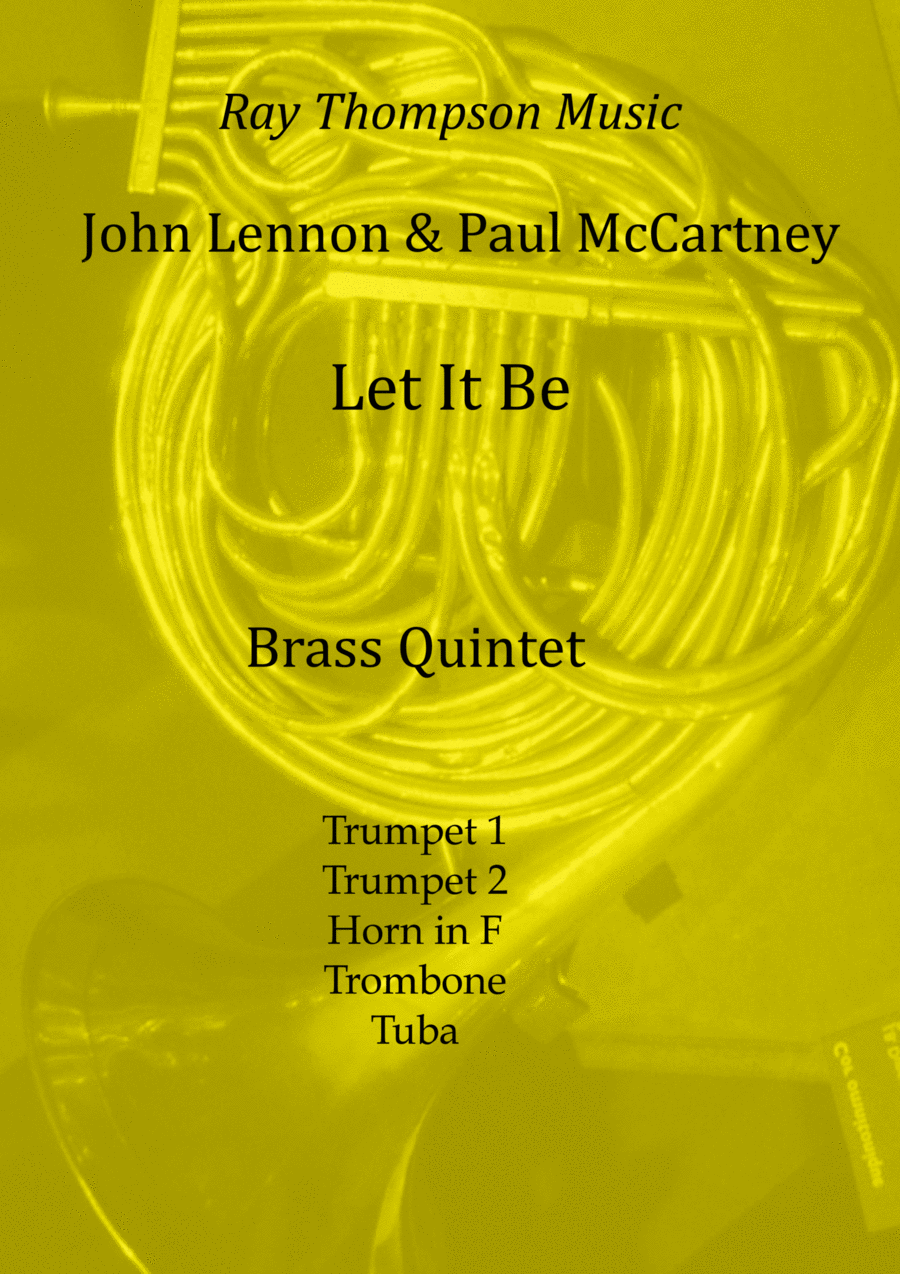Brass Quintet Horn,Trombone,Trumpet,Tuba - Level 4 - Digital Download SKU: A0.1034793 By The Beatles. By John Lennon and Paul McCartney. Arranged by Ray Thompson. Pop,Praise & Worship,Rock,Standards. 12 pages. RayThompsonMusic #640139. Published by RayThompsonMusic (A0.1034793). Arranged standard brass quintet. The melody is taken first by the horn, then trombone and then the trumpet. The guitar break is given to the trombone and trumpet. The mp3 starts before that guitar break.Let It Be is a song by the English rock band The Beatles, released on 6 March 1970 as a single, and (in an alternative mix) as the title track of their album Let It Be. It was written and sung by Paul McCartney, and credited to the Lennon–McCartney partnership. The single version of the song, produced by George Martin, features a softer guitar solo and the orchestral section mixed low, compared to the album version, produced by Phil Spector, featuring a more aggressive guitar solo and the orchestral sections mixed higher. At the time, it had the highest debut on the Billboard Hot 100, beginning its chart run at number 6 and eventually reaching the top. It was the Beatles' final single before McCartney announced his departure from the band. Both the Let It Be album and the US single The Long and Winding Road were released after McCartney's announced departure from and the subsequent break-up of the group.
